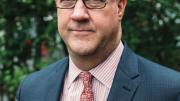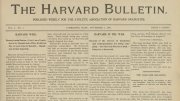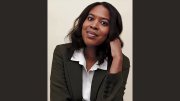With The Harvard Campaign concluded and a new University president in office, the Harvard Alumni Association (HAA) has pivoted to take on new challenges and priorities. The organization is charged with engaging a wildly diverse cohort of 371,000 alumni worldwide. Starting with the class of 2022, notes executive director Philip Lovejoy, who has led the association for five years, essentially all current undergraduates were born within the new millennium—yet “then there are the folks coming back for their seventieth reunion, who were born in the ‘Roaring Twenties.’” Few organizations serve people “aged 19 to 109,” he adds: “That’s why it’s so important that we embrace our traditions and build upon past generations. But we also always have to look to where we’re going and what the needs are going to be, because there’s no question that society is going through radical transformations.” The HAA can play a very important role, as it always has, “to bring alumni together for the good of the institution and society.”
A new online balloting option launched in April for this year’s elections of Overseers and HAA elected directors is one tangible way to better reach that broad group, especially the more than 59,000 alumni outside the United States. “The alumni voice in the governance of this University is what has always made us better and better, right?” says Lovejoy. “They challenge, they question, they oversee, and they push. They keep us honest. So, it is important, and I hope that the advent of online voting will provide greater access to the elections so the alumni voice is heard.”
To increase opportunities for personal contact, the HAA has proposed establishing a Crimson Society, an annual program for the post-fifty-fifth reunion classes that will not supplant the traditional quinquennial reunions. Meanwhile, to streamline reunion operations in general and potentially enable all reunioners to attend Commencement week events and commune with members of other classes, the HAA is also preparing to move all reunions to the spring. The process will start with the thirtieth reunion this May.
How best to engage and support alumni and alumni volunteers is a constant subject of exploration, Lovejoy says. Harvard clubs emerged in the nineteenth century, when alumni began moving beyond the Greater Boston area; they remain vital as geographically based, membership-dependent entities. But given digital communication and the changing needs of mobile alumni, he adds, the now nearly 200 domestic and international clubs are “not the only way people want to connect anymore. Enter SIGs”—shared-interest groups, the most rapidly growing alumni affiliates.
SIGs, which the HAA formally recognized in 2004, evolved from existing grass-roots, self-governing alumni groups, like the Harvard Gay and Lesbian Caucus [Editor's note: it has been renamed the Harvard Gender & Sexuality Caucus] and the Black Alumni Society. Today there are more than 50 SIGs, ranging from Harvard Alumni in Animal Health, Harvard Veterans Alumni Organization, and Harvard University Muslim Alumni to Harvardwood, Harvard Alumni for Global Women’s Empowerment, and Harvard Alumni in Food and Wine; Harvard Alumni Impact Alliance, a multi-sector approach to social change, is among the newest.
“Right now we’re doing an incredibly cool project” with the First Generation Harvard Alumni SIG, says Lovejoy: a “red book” of more than 100 personal essays. The volume represents the first non-class-specific “class report,” and will be printed and distributed early this summer; the HAA will mail free copies to participants, to that SIG’s members, and to incoming first-gen College students.
Among the HAA’s “biggest strategic imperatives in the coming years,” Lovejoy continues, is figuring out how to move beyond geographic barriers to better integrate alumni. How, he asks, can we best “connect everybody in Chicago, for example, who is getting together around Harvard in some capacity…the people in the entrepreneur SIG, the Harvard Club of Chicago, the Business School Club of Chicago, the class of ’87?” The clubs’ roles may evolve, too: “Many find that they’re challenged by memberships, so we really want to look at this concept. What does membership mean today? Are paid membership models right?” SIGs might supply the “content stream” for clubs, he says, but the local, face-to-face, personal meetings are still “the richest way to get together—and people want those.”
He’s wary of perpetuating any perceptions of exclusivity. During the last five years, he says, the association has become “much more open and responsive,” with strong working relationships among colleagues and alumni leaders across Harvard, pursuing a common goal: “How do we empower and strengthen our alumni to be strong citizens of Harvard? What do we need to do to do that?”
“We need to make sure that it’s a place everybody is welcome and feels they belong,” he continues. “So, consistent with the presidential task force on inclusion and belonging (see “A Progress Report on Faculty Diversity”), we’re doing a lot of work on that within our volunteer groups, and also within the staff organization.”
As the HAA faces these and other new imperatives, Lovejoy will continue to travel and meet with alumni. “The depth of commitment and love for this institution by our alumni is profound,” he says. “And we rely heavily on our volunteers to really create these communities, build the connections, to care, to participate. It’s an incredible privilege to be trying to steer this ship.”









